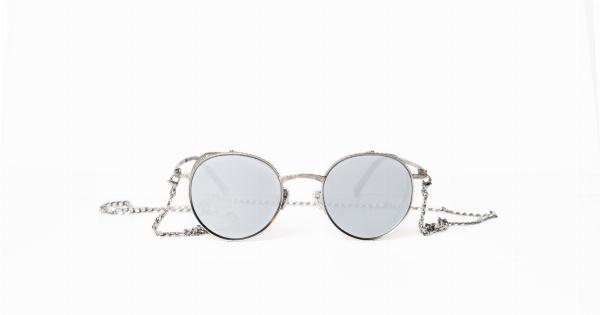When it comes to choosing sunglasses, the lenses are a crucial factor to consider. Not only do they play a significant role in protecting your eyes from harmful UV rays, but they can also enhance your vision and improve your overall visual comfort.
With a wide range of lens options available, it can be overwhelming to determine which one is right for you. In this article, we will discuss the different types of sunglass lenses and help you make an informed decision.
1. Polarized Lenses
Polarized lenses are designed to reduce glare caused by light reflecting off surfaces such as water, snow, or glass. They contain a special filter that blocks horizontal light waves, allowing only vertical light waves to pass through.
This helps improve visual clarity, contrast, and color perception, making them ideal for activities like fishing, boating, skiing, and driving.
2. Mirrored Lenses
Mirrored lenses have a highly reflective outer coating that not only adds a trendy and fashionable look to your sunglasses but also helps to minimize glare.
They work by reflecting much of the light that hits the lens surface, resulting in a darker and more comfortable visual experience. Mirrored lenses are particularly popular among people who spend a lot of time in bright conditions and want extra protection from intense sunlight.
3. Gradient Lenses
Gradient lenses feature a seamless transition from a darker shade at the top to a lighter shade at the bottom.
This design allows you to have clear vision while looking straight ahead while providing shade and protection from the sun’s rays when you look down. Gradient lenses are versatile and can be a good choice for various outdoor activities.
4. Photochromic Lenses
Photochromic lenses, also known as transition lenses, automatically darken when exposed to UV light and lighten when you are indoors or in low light conditions.
They offer the convenience of not having to switch between regular prescription glasses and sunglasses. As the level of UV light changes, the lenses adapt accordingly, providing optimal vision and eye protection throughout the day. Photochromic lenses are great for those who frequently move between indoor and outdoor environments.
5. Tinted Lenses
Tinted lenses come in various colors and shades, allowing you to customize your sunglasses based on your preferences. Different tints serve different purposes. For example:.
- Gray or smoke lenses provide true color perception and reduce brightness without distorting colors.
- Brown lenses enhance contrast and depth perception, making them suitable for activities like golfing or driving.
- Amber or yellow lenses enhance visual depth and are often used in low-light conditions, such as foggy or overcast weather.
- Green lenses provide a soothing effect on the eyes and improve contrast in bright conditions.
Choose the lens tint that best suits your needs and preferences.
6. Blue Light-Blocking Lenses
In today’s digital age, we are constantly exposed to screens such as smartphones, tablets, and laptops. Blue light-blocking lenses are designed to reduce the amount of blue light that reaches your eyes, protecting them from potential harm.
Prolonged exposure to blue light can cause digital eye strain, which may lead to headaches, blurred vision, and disrupted sleep patterns. Adding a blue light filter to your sunglasses can alleviate these symptoms and provide relief during extended screen time.
7. Anti-Reflective Coating
An anti-reflective (AR) coating helps to reduce glare by minimizing the amount of light that reflects off the front and back surfaces of the lenses.
This coating improves visual clarity, reduces eye strain, and enhances the overall appearance of your sunglasses. AR coating is beneficial for all types of lenses and is often combined with other lens options for added protection and comfort.
8. UV Protection
Regardless of the type of lenses you choose, it is essential to ensure they provide 100% UV protection. Prolonged exposure to UV radiation can lead to serious eye conditions such as cataracts, macular degeneration, and photokeratitis.
Always look for sunglasses that block both UVA and UVB rays to safeguard your eyes from harmful ultraviolet radiation.
9. Prescription Sunglasses
If you require prescription glasses to correct your vision, consider getting prescription sunglasses.
These sunglasses can be customized with your specific prescription needs, allowing you to enjoy clear vision while protecting your eyes from the sun’s harmful rays. Talk to your optician about the various lens options available for prescription sunglasses.
10. Consider Your Lifestyle
When choosing sunglasses lenses, it is crucial to consider your lifestyle and the activities you participate in regularly. Different lens options cater to specific needs, so think about how and where you will be using your sunglasses the most.
If you are an avid outdoor enthusiast, polarized or photochromic lenses might be the best fit for you. On the other hand, if you spend long hours in front of screens, blue light-blocking lenses could significantly benefit your eye health.
In conclusion, selecting the right sunglass lenses involves considering various factors such as the type of lens, its functionality, and your personal preferences.
Whether you opt for polarized, mirrored, gradient, photochromic, tinted, blue light-blocking lenses, or any combination, ensuring UV protection is paramount. Consult with an eye care professional or optician who can guide you in choosing the perfect sunglasses lenses that suit your individual needs, giving you both style and functionality.




























